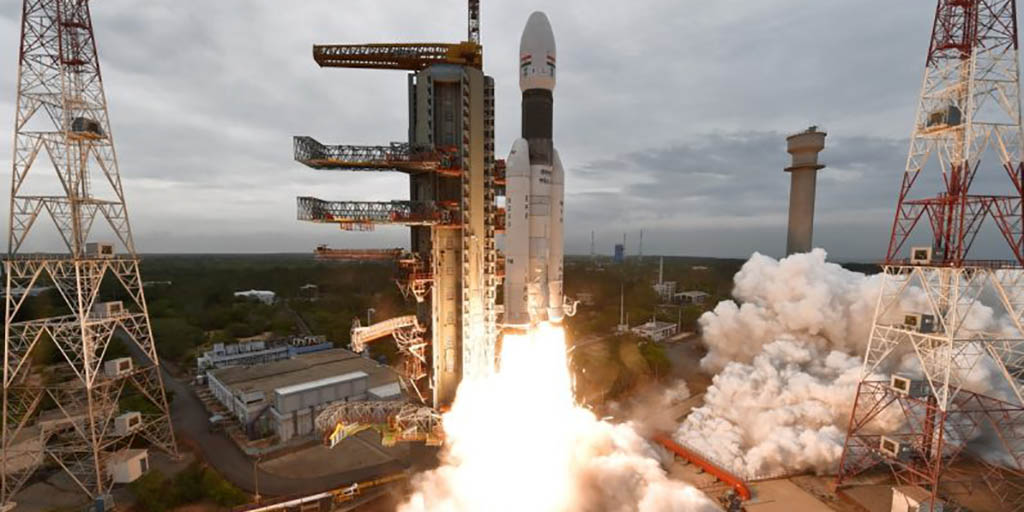Chandrayaan-2: A risk worth taking
 CREDIT: IMAGE TWEETED BY THE INDIAN SPACE RESEARCH ORGANIZATION (ISRO)
CREDIT: IMAGE TWEETED BY THE INDIAN SPACE RESEARCH ORGANIZATION (ISRO)Chandrayaan-2 began its journey to the moon on July 22 from Andhra Pradesh in India.
Many had their hopes high for India to make its mission to the moon, Chandrayaan- 2, a success. However, on Sept. 7 the mission ended in failure just 2.1 kilometers from the surface of the moon.
India aimed to be the fourth country to land on the lunar surface after the U.S., Russia and China. Chandrayaan-2, which means ‘mooncraft’ in Sanskrit, is India’s second lunar exploration mission developed by the Indian Space Research Organization (ISRO) after Chandrayaan-1, which launched on Oct. 22, 2008. The Chandrayaan-2 consists of a lunar orbiter, the Vikram lander, and the Pragyan lunar rover, all of which were developed in India.
This mission has been described by the ISRO as one of the most complex ever undertaken. The rover was planned to land where no country has ever gone before: the moon’s south polar region. The primary objectives of Chandrayaan-2, as described by ISRO, were to demonstrate the ability to soft-land on the lunar surface and operate a robotic rover on the surface. Chandrayaan was to carry out research, looking for the presence of water, mapping of moon’s surface and clicking high-resolution images. According to New Delhi Television Limited, another differentiating factor is that Chandrayaan-2 mission’s budget is less than one-twentieth of NASA’s.
The craft was launched from the Satish Dhawan Space Centre in Andhra Pradesh on July 22. It reached the moon’s orbit on Aug. 20 and began orbital positioning manoeuvres for the landing of the Vikram Lander. Vikram and the rover were scheduled to land on the near side of the moon, in the south polar region on Sept. 7 and conduct scientific experiments for one lunar day, which is equivalent to two Earth weeks.
However, the mission appeared to end in failure. The initial parts of the descent went smoothly. But less than two miles above the surface, the trajectory diverged from the planned path. The mission control room fell silent as communications from the Lander were lost. The orbiter still remains in operation though, making the mission only a partial failure.
This was the third attempted spacecraft landing on the moon this year. In January, China landed the first probe ever on the far side of the moon. The lander and accompanying rover have been operating since then. Israel Aerospace Industries, a non-profit organization, sent a small robotic spacecraft named Beresheet, but its landing attempt in April went awry in a manner similar to Chandrayaan-2.
While India may not have stuck the landing on its first try, its attempt highlighted how its engineering prowess and decades of space development have combined with its global ambitions. It was a proud moment for Indians all over the world, not only because India has made great advancements in space in recent times but also because this mission was led by two women. The setback for Chandrayaan-2 teaches us the importance of experimentation: that all progress is a result of risky endeavours, which could have failed.
The next mission that India has planned is called Gaganyaan where it is preparing to send a human into orbit by 2022.
Editorial opinions or comments expressed in this online edition of Interrobang newspaper reflect the views of the writer and are not those of the Interrobang or the Fanshawe Student Union. The Interrobang is published weekly by the Fanshawe Student Union at 1001 Fanshawe College Blvd., P.O. Box 7005, London, Ontario, N5Y 5R6 and distributed through the Fanshawe College community. Letters to the editor are welcome. All letters are subject to editing and should be emailed. All letters must be accompanied by contact information. Letters can also be submitted online by clicking here.














